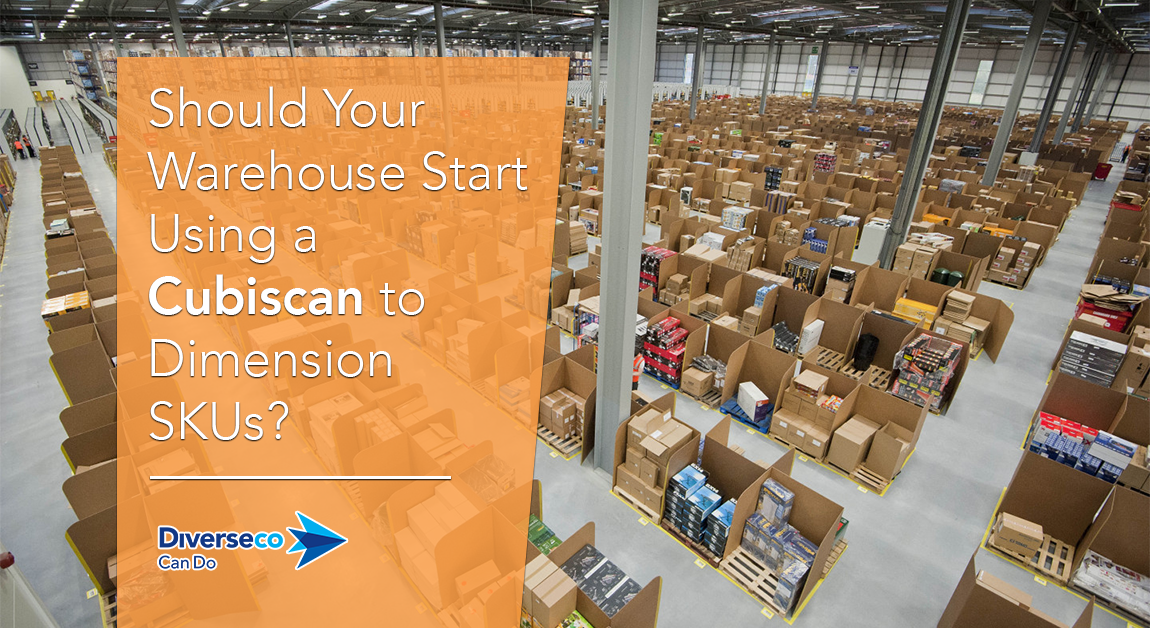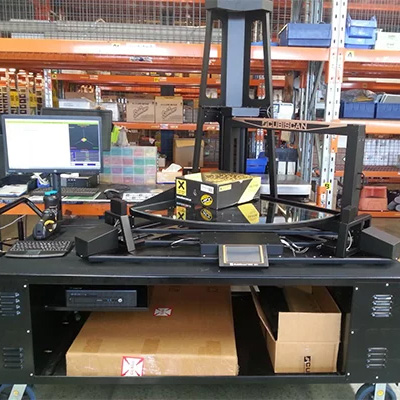
Why SKU Dimensioning is the Critical First Step in Warehouse Optimisation
In today’s competitive supply chain environment, the ability to drive efficiencies across warehousing and distribution centre (DC) operations is more important than ever.
Advanced warehouse management system (WMS) optimisation modules offer powerful capabilities – but to unlock their full potential, one key prerequisite remains: accurate dimensioning and weighing of every stock keeping unit (SKU).
That’s where solutions like Cubiscan come into play.
Across Australia and New Zealand, conversations with supply chain professionals and WMS vendors consistently reveal a common theme: while the topic of SKUs may seem unremarkable at first, it often sparks valuable insights. Many supply chain leaders come to recognise a significant gap between the data their systems require and the information they currently have – highlighting the need for accurate SKU dimensioning to fully unlock the potential of their warehouse management systems.

The Hidden Challenge Behind Optimisation
Many organisations understand they need to dimension their SKUs, and while the decision may have been made in principle, the implementation is often delayed. Others are still in the early stages of awareness – evaluating the role SKU data plays in their broader optimisation efforts.
In an industry defined by narrow margins and rising customer expectations, operational efficiency is no longer optional. Every opportunity to reduce cost and increase accuracy must be explored – and dimensioning SKUs is one of the most impactful yet underutilised levers available.
The Global Shift Toward Dimensional Accuracy
Dimensioning, or “cubing,” refers to the process of measuring the physical dimensions – length, width, and height – of an item. In logistics, it’s essential to know both the actual and the dimensional (volumetric) weight of a parcel, as global carriers like UPS, FedEx, and Australia Post have increasingly adopted pricing models based on whichever is greater.
Understanding the cubic weight of your SKUs isn’t just useful – it’s becoming a commercial necessity.

SKU Dimensioning: The Foundation of WMS and DC Optimisation
At its core, every customer order is comprised of SKUs. Whether it’s a single item or a mixed carton of various products, that order eventually becomes a freight consignment – one that will be dimensioned, weighed, and charged accordingly.
Before any business can take full advantage of WMS capabilities such as cartonisation, slotting, load building, or even automated picking, a foundational dataset is required: accurate dimensional and weight data for every SKU in the warehouse. This includes not only existing inventory but also new stock introduced on a regular basis.
Nine Strategic Reasons to Dimension Your SKUs
Organisations that invest in SKU cubing and weighing benefit far beyond freight savings. Here are nine key reasons to prioritise SKU dimensioning:
- WMS Evaluation – Validate a new or potential WMS by asking: How does your system leverage precise SKU dimensional data?
- Facility Design – Determine racking systems, bin types, and floor space based on actual SKU dimensions.
- Storage Optimisation – Enable WMS-driven decisions for efficient use of space.
- Slotting Optimisation – Improve pick zone design and product accessibility.
- Cartonisation Accuracy – Ensure items are picked and packed into the right shipping containers.
- Quality Control – Implement check-weighing for verification and security.
- Load Building – Improve pallet and container loading accuracy through better data.
- Shipping Optimisation – Avoid back charges and leverage accurate dim-weight calculations.
- System Requirements – Many WMS platforms require this data to function effectively.
If these topics are part of your current strategic discussions, you’re already on the right path toward modernising your warehouse or DC operations.

The Path Forward: Solving the Data Gap
Gathering accurate SKU dimensions across thousands — or even hundreds of thousands — of items might sound daunting. However, with the right technology, such as Cubiscan’s automated cubing and weighing solutions, this task becomes both manageable and scalable.
From reducing freight costs to enabling intelligent automation within your WMS, SKU dimensioning is no longer a nice-to-have — it’s a must-have. If you’re exploring WMS enhancements or new facility builds, the time to act is now.
To learn more about how Cubiscan technology can support your operational goals, feel free to contact us directly. We’d be glad to help you take the next step.

